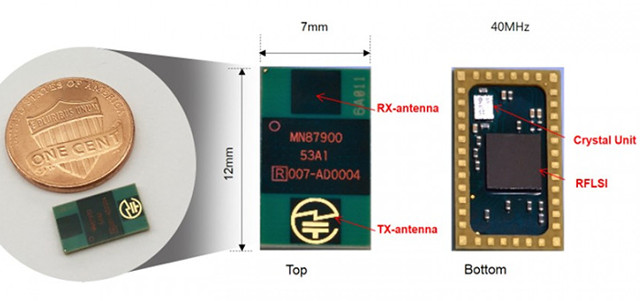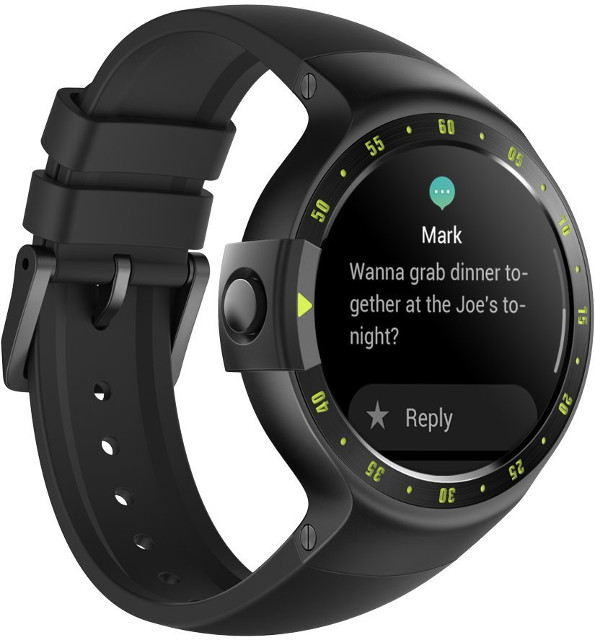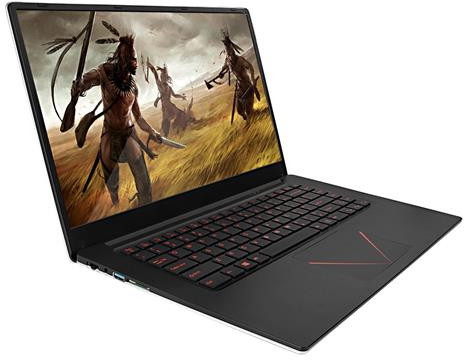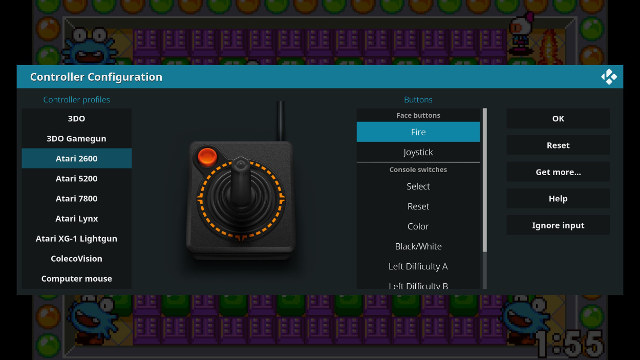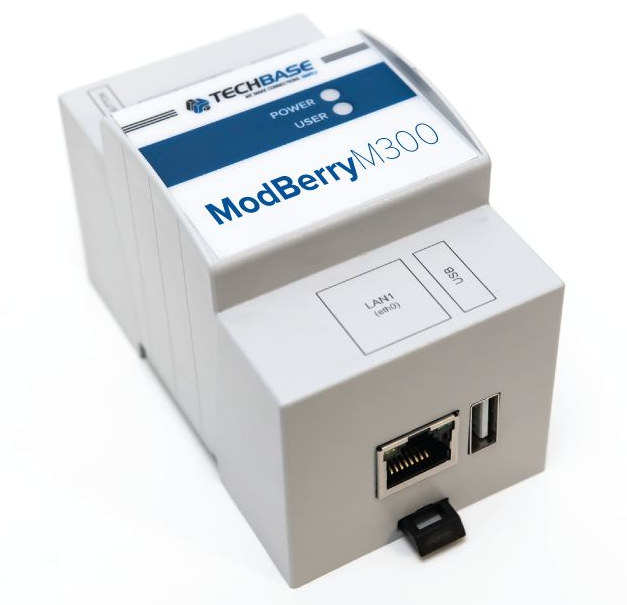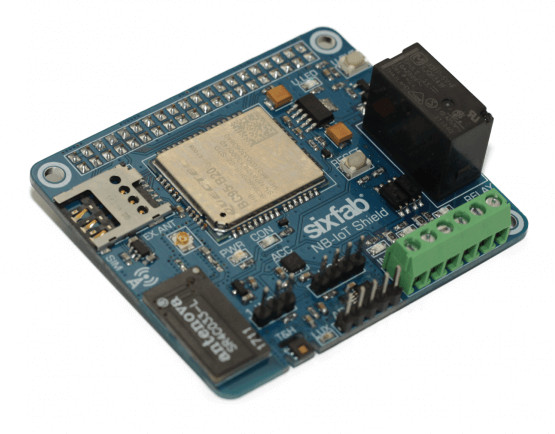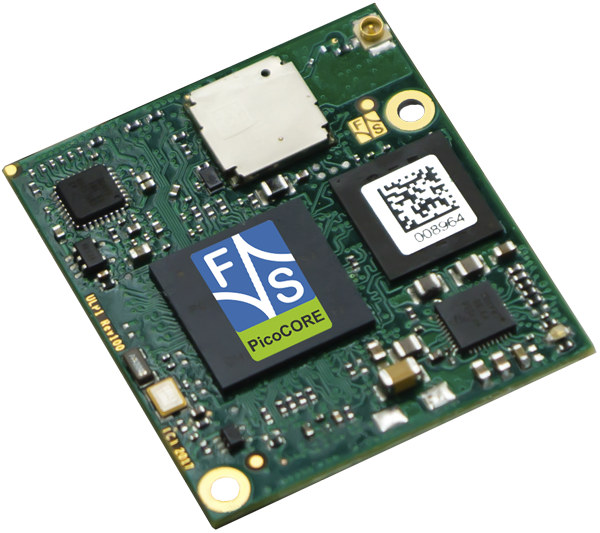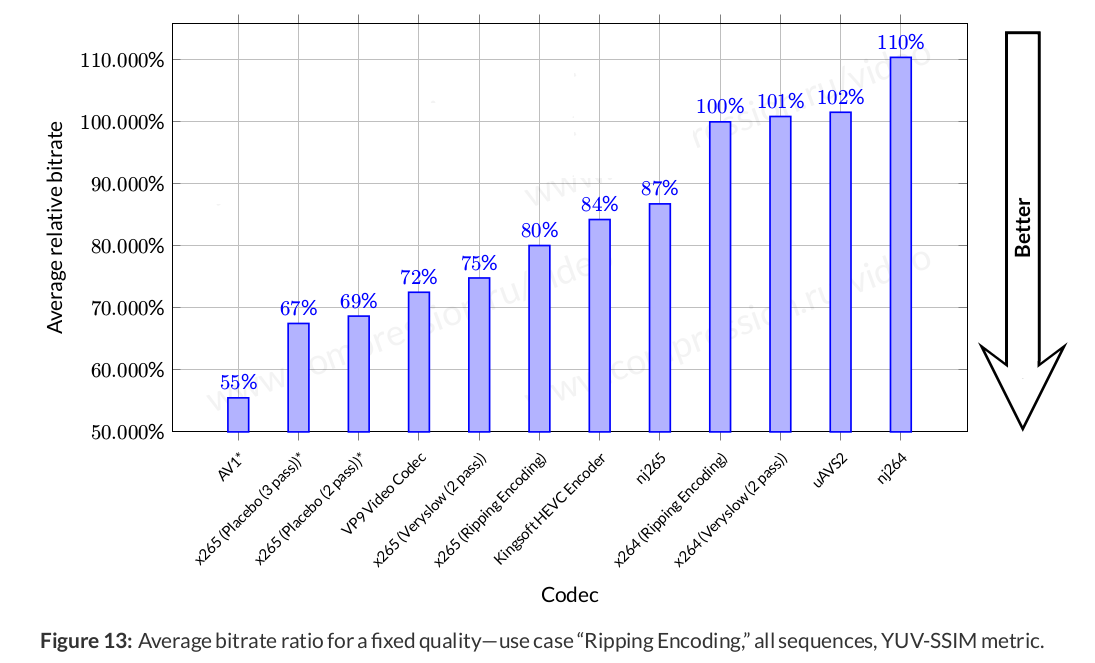In the past, we covered tiny microwave radar modules operating at 5.8 GHz and measuring just 32 x 23 mm. Those modules are normally used to detect motion, distance, and/or direction of movement. Socionext has now introduced MN87900, a single low-power single-chip 24 GHz radio wave IoT sensor solution that even smaller at just 12x7mm with the chip, Tx and Rx antennas, crystal, and 40-pin to solder the module to your board. The solution targets IoT equipments, security systems, smart home appliances, autonomous vehicles and drones, medical devices, and more. SocioNext MN87900 key specifications: Sensor Type – CW, FSKCW, FMCW (moving or stationary) Detection Motion direction – approaching or leaving Motion speed – up to 200 km/h Range – 0.15 to 8 meters 80°@-3dB, expandable to 30 meters with a radome horn, a metal shield that narrows the field of view. Variable frequency width – 24.15±0.1 GHz Transmission Power – […]
Ticwatch S / E Android Wear Smartwatches are Powered by Mediatek MT2601 SoC
Android Wear is normally used in products from larger companies such as Huawei, LG, or ASUS. In the past, some smaller companies claimed to have designed their own Android Wear smastrwatch with approval from Google, but eventually their products went nowhere, even though one was listed on some sellers as a pre-order. But last summer, Mobvoi launched a Kickstarter campaign for their Ticwatch S & E smartwatches powered by Android Wear, and they managed to raise over $3 millions dollars from close to 20,000 backers with pledges starting at $99. The watches can now be purchased online for $127.99 and up from sites like Amazon, GeekBuying, GearBest, or directly from Mobvoi store. Ticwatch S (Sport) and E (Express) share many of the same features, but Ticwatch E is a bit lighter and more elegant, while Ticwatch S comes with a breathable band design with an integrated GPS antenna. Specifications: SoC […]
T-bao Tbook X8S Pro Apollo Lake Laptop is Equipped with an NVIDIA Geforce GPU
Most products based on Intel Apollo Lake processor do so to leverage the low cost and low power of the chip that also embeds Intel HD graphics removing the need for an external graphics card. But T-bao Tbook X8S Pro laptop powered by Intel Celeron J3455 Apollo Lake “Desktop” processor also comes with an NVIDIA GeForce 920M GPU which should boost graphics performance. Tbook X8S Pro specifications: SoC – Intel Celeron J3455 quad core Apollo Lake processor @ 1.50 / 2.30 GHz with (unused) 12EU Intel HD Graphics 500; 10W TDP GPU – NVIDIA GeForce 920M @ 954 MHz with 2GB RAM System Memory – 6GB DDR3 Storage – 128GB eMMC flash or M.2 SSD (unclear), micro SD card slot up to 128 GB Display – 15.6″ IPS screen with 1920×1080 resolution Video Output – HDMI output Audio – Built-in microphone, and stereo speakers; 3.5mm audio jack Connectivity – Gigabit […]
Kodi 18 Features and Improvements (FOSDEM 2018 Video)
Most Kodi users are now running Kodi 17.x Krypton that was initially released in February 2017, with the latest point version being Kodi 17.6. At the time of Krypton release, the developers had also started working on Kodi 18 “Leia” which should now be in “alpha”, and the stable release may only be a few months away although Kodi developers do not provide an ETA. What they did provide however – via Martijn Kaijser at FOSDEM 2018 – is a progress report for Kodi 18 “Leia”, as well as some insights into Kodi 19 whose development has just started. Kodi 18 has gone through a lot of cleanup with the code upgraded to C++11 standard, duplicate code and obsolete libraries removed, dropped unmaintained feature, and so on. They also moved non-core features such as audio encoders and decoders, PVR, picture decoding, etc… to external plugins. This work resulted into 299,476 […]
TECHBASE ModBerry M300 IoT Gateway Adds Support for NanoPi and Orange Pi Allwinner H5 Boards
Announced at the end of last year TECHBASE launched the ModBerry M300, a Linux IoT gateway powered by FriendlyELEC NanoPi NEO board equipped with Allwinner H3 Cortex A7 processor. The company has now made four extra variants of the gateway with Allwinner H5 quad core Cortex A53 based development boards from FriendlyELEC and Shenzhen Xunlong: Modberry M300 N2 – Based on NanoPi NEO2 Modberry M300 N2+ – Based on NanoPi NEO Plus2 adding 8GB eMMC flash, WiFi & Bluetooth 4.0, and an extra USB port over the N2 model Modberry M300 O1 – Based on Orange Pi Zero Plus Modberry M300 O2 – Based on Orange Pi Zero Plus2 adding 8GB eMMC flash, HDMI, one extra USB port, and Bluetooth 4.0 over the O1 model, but falling back to 10/100 Ethernet, while all three models above come with Gigabit Ethernet To avoid confusion, the original NanoPi NEO model has changed […]
Sixfab Launches Arduino and Raspberry Pi NB-IoT Shields with Four Sensors
SixFab previously introduced a 3G/4G base shield for the Raspberry Pi boards that would take Quectel based mini PCIe card in order to add cellular connectivity to the popular development boards. The company is now back with NB-IoT shields that should better suited to IoT projects with lower hardware and data costs, and support either 40-pin Raspberry Pi boards or Arduino. SixFab Raspberry Pi NB-IoT Shield Specifications & features: Module – Quectel BC95-B20 NB-IoT Module supporting 800MHz frequency (suitable for the European market) Micro SIM card socket, PCB Antenna and u.FL socket for external antenna I/O expansions 4x Channel 12-bit ADC via ADS1015 Relay with optocoupler protection (24V DC, 120-220V AC Switching) 3-pin 1-Wire interface for DS18B20, DHT21, etc… 4-pin I2C interface 3.3V reference voltage Sensors MMA8452Q 3-axis accelerometer HDC1080 temperature sensor (-40 to +125 °C) HDC1080 humidity sensor (0 to 100%) ALS-PT19 ambient light sensor Misc – User button […]
PicoCORE MX7ULP is a Compact Module Based on NXP i.MX 7ULP Ultra Low Power Processor
NXP unveiled another variant of their i.MX 7 Cortex A7 processor last year, and I missed it. NXP i.MX 7ULP offers many of the same features as i.MX 7, but is manufactured using FD-SOI (Fully Depleted Silicon On Insulator) process technology to offer lower power consumption, as low as 15 mW or less in deep sleep, or 17 times less in comparison to i.MX 7 devices, while the dynamic power efficiency is improved by 50 percent on the real time domain (Cortex-M4). I found out about it thanks to an email from F&S Elektronik Systeme about the introduction of their PicoCORE MX7ULP module – based on i.MX 7ULP processor – at the Embedded World 2018 conference. PicoCORE MX7ULP CoM specifications: SoC – NXP i.MX 7ULP Arm Cortex-A7 processor @ up to 800 MHz, with Arm Cortex-M4 real-time core, and 2D/3D graphics accelerator System Memory – Up to 1GB LPDDR3 Storage […]
AV1 Open Source Video Codec Update at FOSDEM 2018 (Video)
We first covered the Alliance for Open Media’s AV1 video codec in summer 2016, as an open source, royalty-free video codec aiming to replace VP9, and compete or even surpass H.265 capabilities. At the time, everything was pretty new, and when I tried the open source implementation encoding was really slow. Since then, AV1 has gained momentum with for example Apple, Facebook, and IBM recently joining AOMedia, and Mozilla adding HTML5 AV1 video support to Firefox Nightly builds at the end of last year. I was able to play a 720p video @ 800 Kbps almost smoothly in my computer based on AMD FX8350 processor. Many companies want AV1 to succeed since they may not be willing to pay MPEG LA license fee for H.265 and future MPEG codecs (e.g. H.266), and there indeed seems to be issues with the currently MPEG licensing business model. However, AV1 is not quite […]

